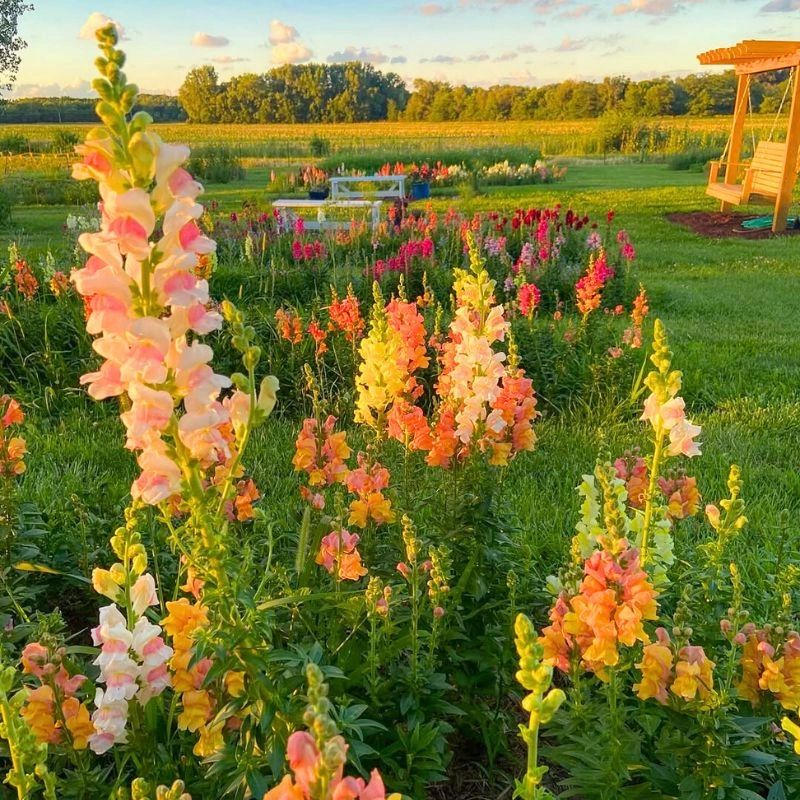Antirrhinum majus, commonly known as 'snapdragon', is a flowering plant valued for its appearance and utility, both as a garden flower and as a cut flower. Originating from the Mediterranean region, they are a member of the Plantaginaceae family and exhibit a fascinating range of colors, including red, pink, purple, yellow, orange, and white. Keep reading this article to get to know more about it.
What Is Antirrhinum Majus, aka Snapdragon Flower?
Antirrhinum majus has become one of the more popular and contemporary flowers these days. Fancied because of their resemblance to a dragon's face that opens and closes its mouth when laterally squeezed, snapdragons are here to win you over. But also as an outdoor plant, they are a perfect choice to have a lively garden. Let's not forget that these lovely plants are also attractive to pollinators, such as bees, butterflies, and hummingbirds, contributing to a thriving garden ecosystem.
They also produce exceptional cut flowers, bringing their vivid colors and shapes indoors. The long, static flowers of snapdragons can be used easily in different lengths to create that free and strong look. Here is everything you need to know about this gorgeous flower.
The Snapdragon Origin
Antirrhinum is derived from the rocky areas of the Mediterranean and the Middle East. Usually, the term snapdragon plant is used for the larger plants in the Antirrhinum family, which is its botanical name. In the wild, these flowers love a sunny place in calcareous soil. It loves this soil so much that you should not be surprised to see a snapdragon flower located in the cracks of an old wall or growing in a quarry.

Photo: @therapy_of_flowers
Snapdragons have long been part of botanical studies and garden traditions. They were commonly found in monastery gardens and have been cultivated for centuries. The plant can reach about 80 centimeters in height, with flowers grouped together at the top of the stem. These flowers appear in many colors. Some are plain white, others yellow with small pink marks. There are also varieties in pink, peach, and other soft tones. Their structure and color range make them a common choice in gardens and floral arrangements.

Snapdragon Symbolism, Meanings, and More to Know!
In Ancient Greek, snapdragons literally mean 'like a nose', possibly referring to the nose-like capsule in its mature state. The opinions of which (mythical) animal this nose-shape is from vary. In English, the name, of course, refers to a dragon, but in most languages, the snapdragon translates to 'lion’s mouth'.
Snapdragons carry a long history of symbolic meaning across different cultures. One of the most common associations is with strength. This comes from the plant’s ability to grow in rocky or difficult soil, showing resilience in less-than-ideal conditions. Because of this, it has often been seen as a symbol of inner strength or quiet perseverance.
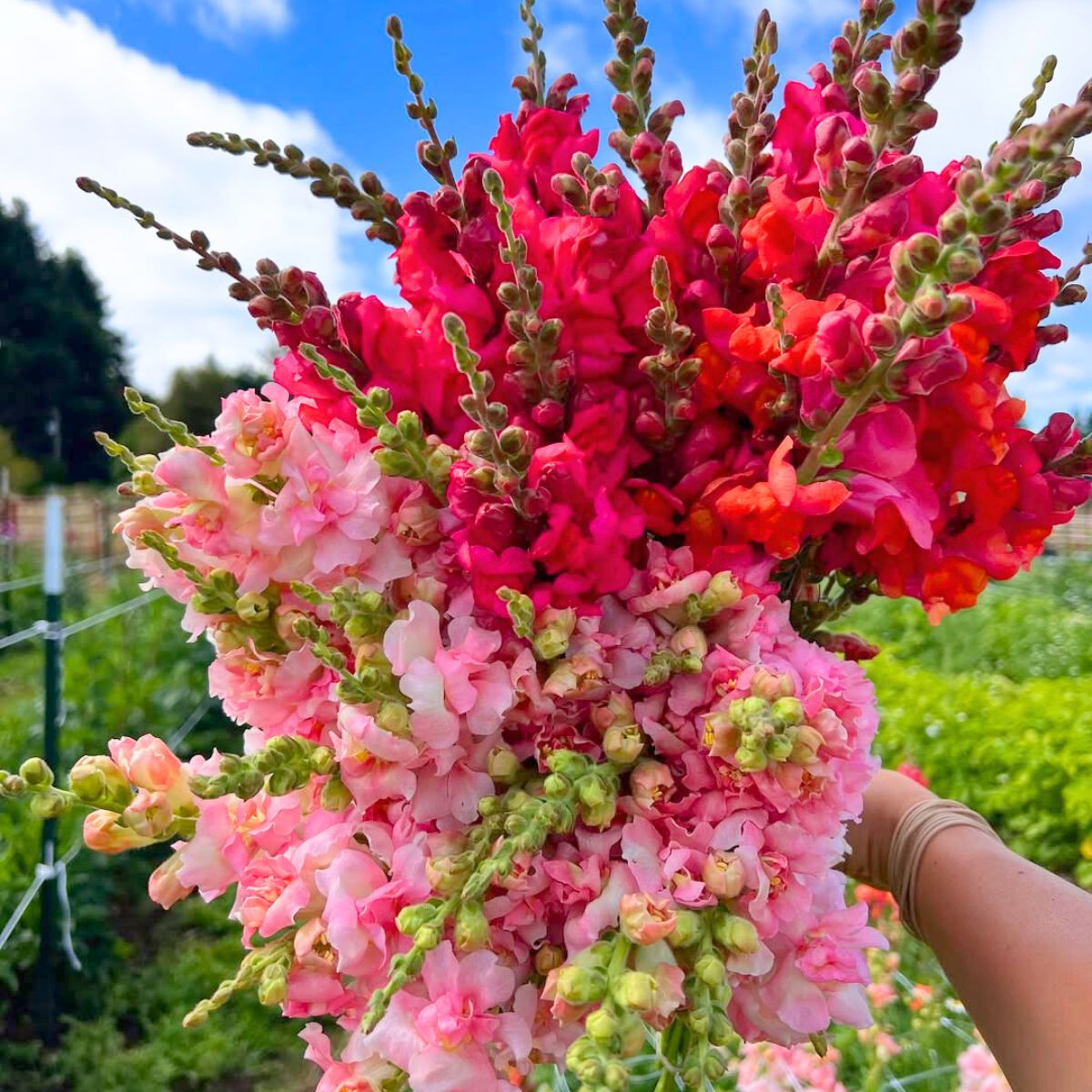
In other traditions, they have also represented grace under pressure. Their soft-looking petals contrast with their tough growing habits, making them a metaphor for people who remain composed or kind even during challenges.
These beauties have also been linked to secrecy or protection. In folklore, they were sometimes believed to guard against deceit or bad intentions. This idea came from the way the flower can open and close, almost like a mouth that holds secrets. Though meanings can vary, these core ideas—strength, grace, and quiet protection—are the most lasting themes connected to the snapdragon flower.
When giving snapdragons as a gift or using them in floral arrangements, these meanings can add depth and significance to the gesture. The specific snapdragon symbolism conveyed may also depend on the color of the flowers, with each carrying its symbolism, such as red for passion, yellow for friendship, or white for purity.
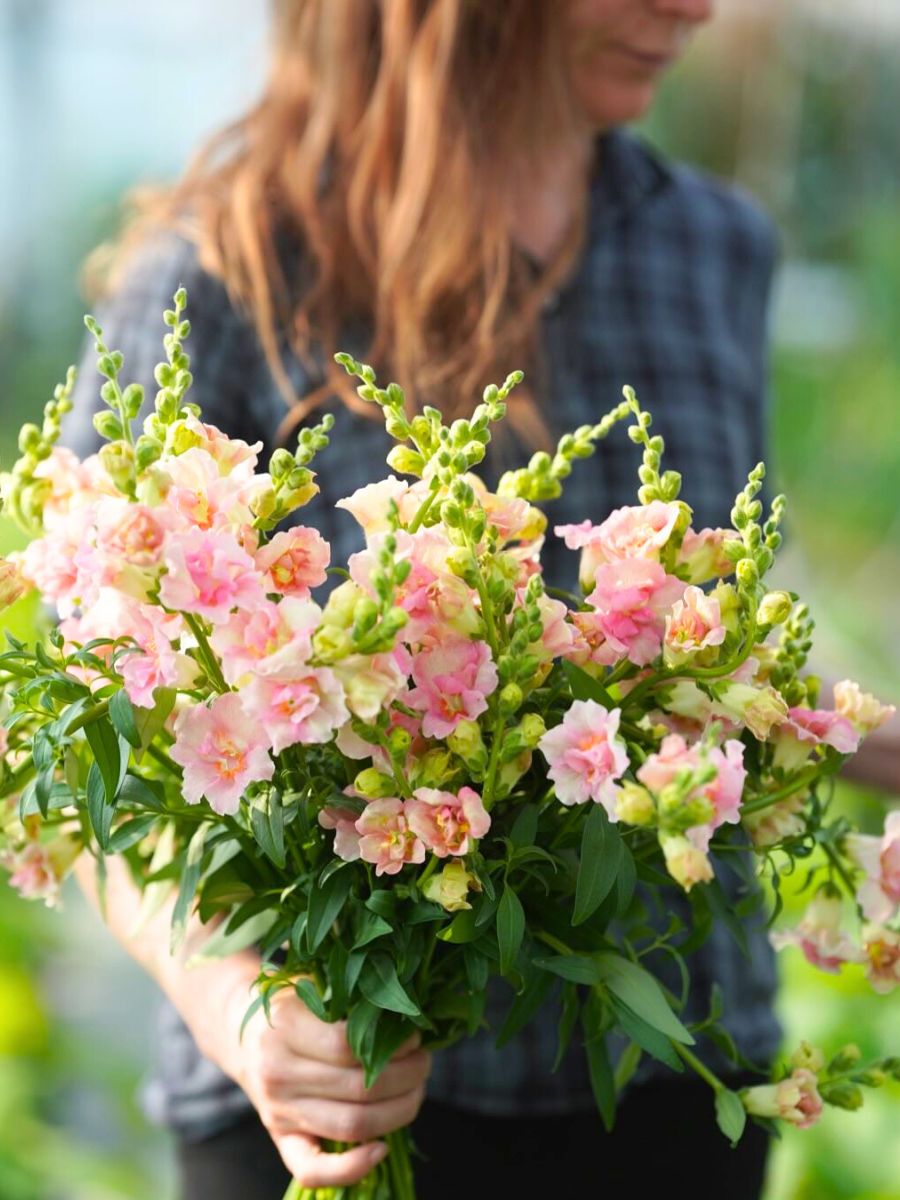
Are Snapdragons Perennials?
These flowers are technically classified as short-lived perennials or tender perennials. However, they are often grown as annuals in many climates, especially in colder regions where they may not survive the winter.
In milder climates, snapdragons can sometimes overwinter and grow as perennials, re-blooming for two or more years. They may die back in the winter, but can regrow from the roots in the spring. To increase the chances of making them perennials, it's essential to provide proper care, such as appropriate watering, deadheading spent blooms, and applying a layer of mulch to protect the roots during colder months.
In colder climates, snapdragons are annual and are replaced each year. However, they can self-seed and produce new plants the following year if the conditions are favorable. Regardless of whether they are annuals or perennials, they are popular flowering plants that add color and interest to gardens, borders, and containers. They are available in various heights, colors, and forms, making them a great add-on for many garden designs.

How to Care for Snapdragons?
When caring for snapdragons, you need to take various aspects into consideration if you want to see your plant thriving. These are the main guidelines on how to take proper care of them to ensure you have beautiful flowers in your garden.
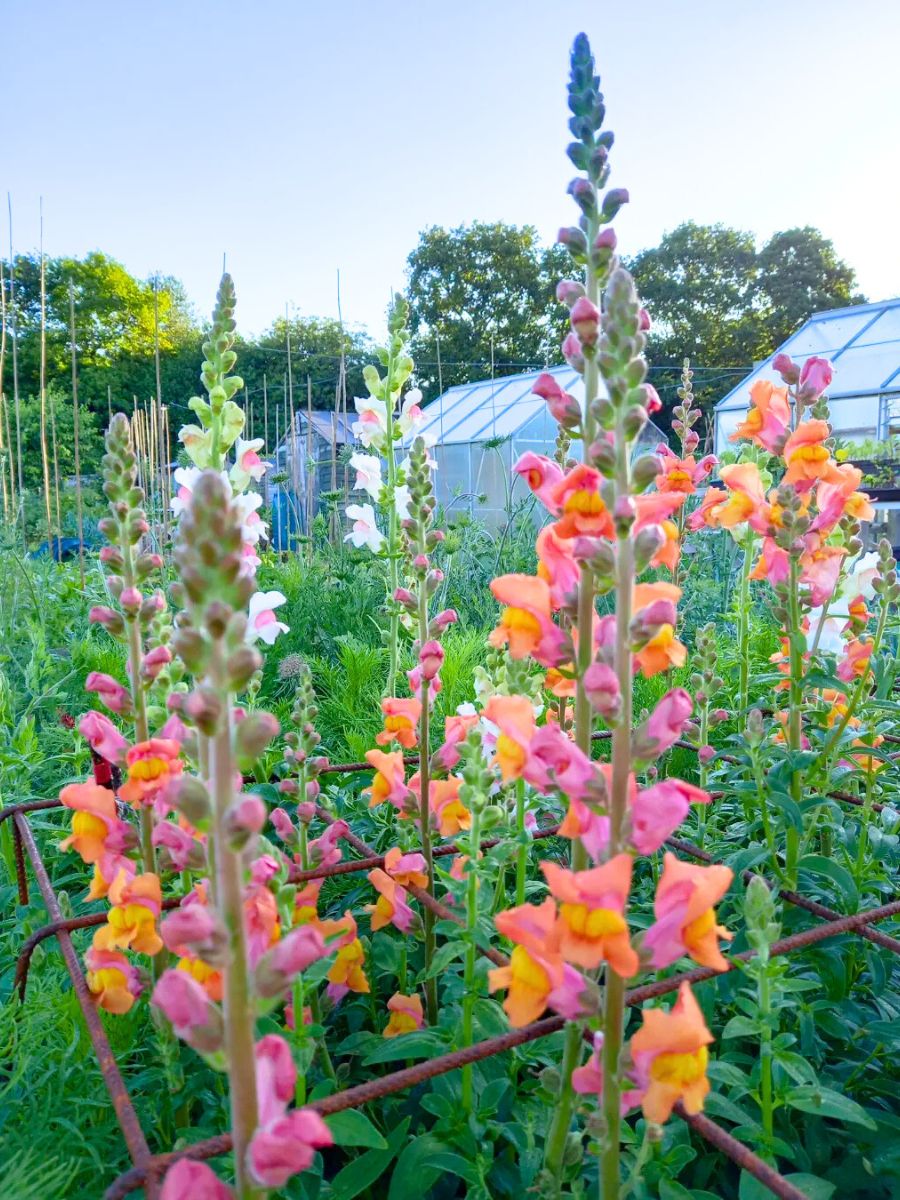
Watering Needs
Snapdragons prefer consistently moist soil but do not tolerate soggy conditions. The frequency of watering depends on factors such as weather, soil type, and plant size. As a general guideline, water them once or twice a week, ensuring the soil remains moist but not waterlogged.
To determine when to water your snapdragons, check the soil moisture by inserting your finger about an inch into the soil. If it feels dry, it's time to water. If the soil is still moist, wait a day or two before checking again. In hot or dry conditions, your flowers may need more frequent watering, while in cooler or wetter conditions, they may require less.
When watering them, it's best to water deeply, allowing the moisture to reach the root zone. Avoid wetting the foliage, as this can lead to fungal diseases. Drip irrigation or soaker hoses are ideal for providing consistent moisture to plants while minimizing water waste and keeping the foliage dry.
Light Requirements
Snapdragons thrive in full sun to partial shade. They prefer at least 6 hours of direct sunlight per day for optimal growth and flowering. However, in hot climates or during periods of intense heat, they appreciate some afternoon shade to protect them from excessive heat stress. Providing the right balance of sunlight helps ensure healthy growth, vibrant colors, and abundant petals. Make sure to choose a location in your garden that meets these snapdragon light requirements to give yours the best chance for success.
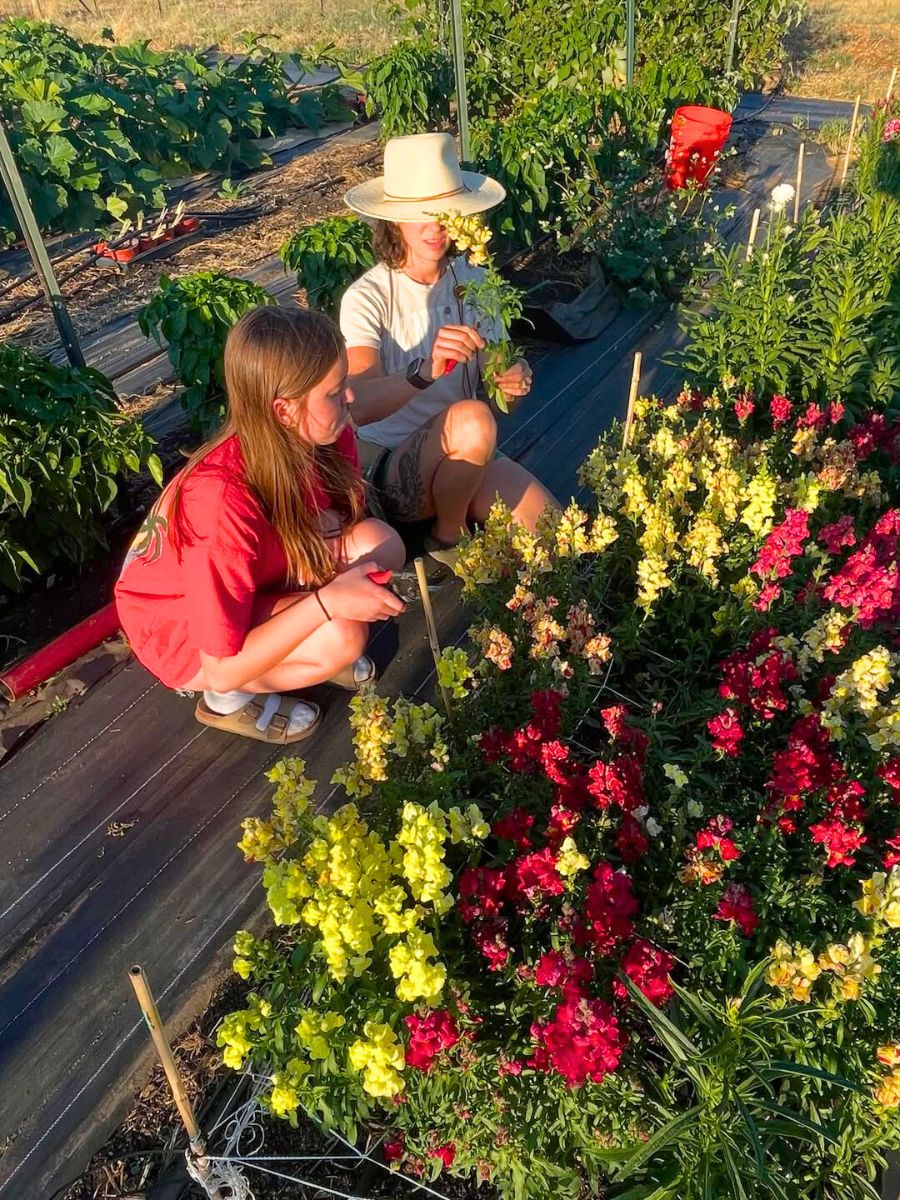
Temperature Range
Snapdragon plants are versatile plants that can tolerate a wide temperature range. They grow best in moderate temperatures, ideally between 15-24°C (60-75°F) during the day and 4-13°C (40-55°F) at night. Antirrhinum majus can withstand light frosts and cooler temperatures, making it suitable for early spring and fall planting in many regions. However, in hot climates, these flowers may struggle with intense heat and may require some protection or shade during the hottest part of the day. While they can adapt to various conditions, maintaining a moderate temperature range will promote healthy growth and abundant flowering.
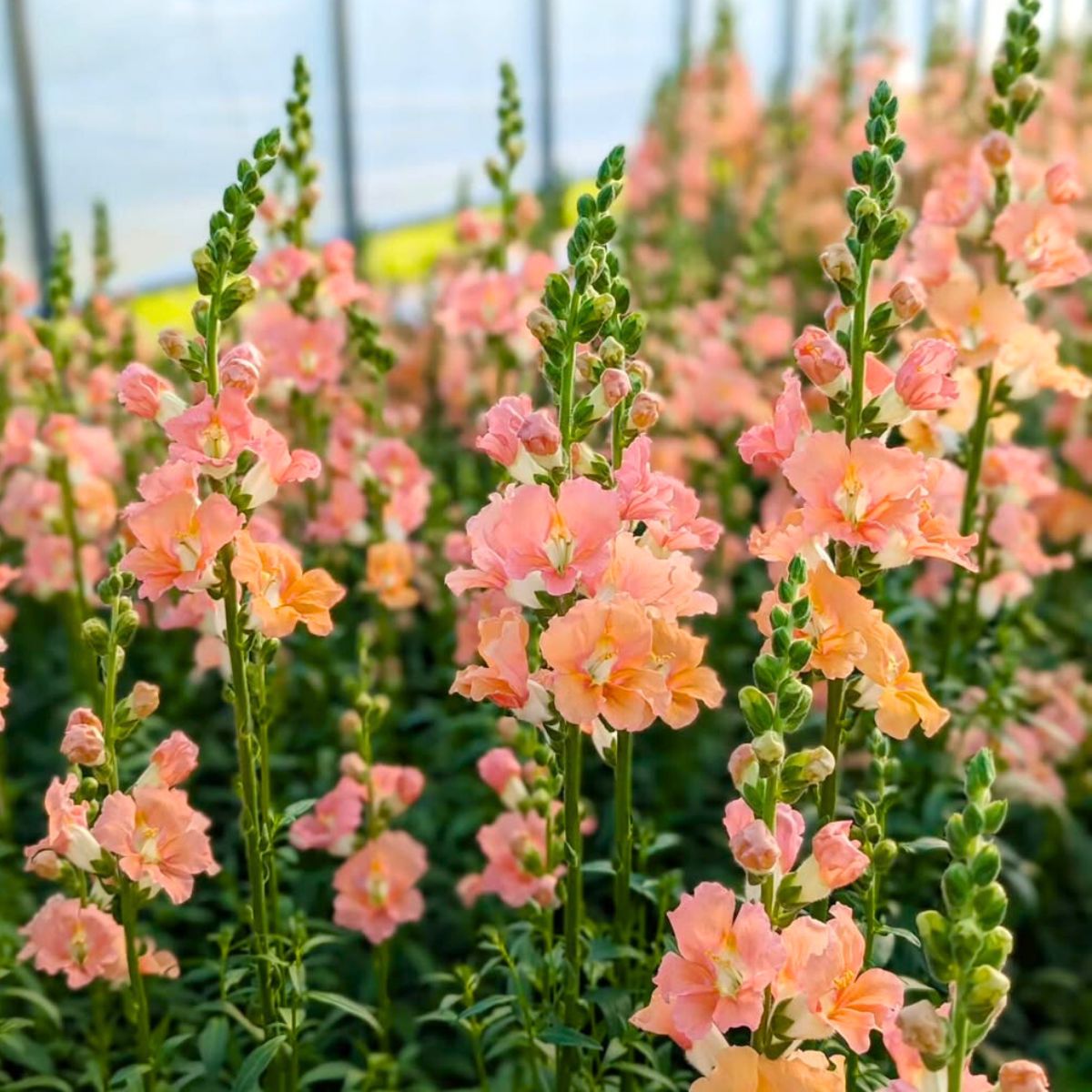
How to Grow Snapdragons?
You can start seeds indoors 6-8 weeks before the last frost or directly sow them outdoors after the risk of frost has passed. Space plants according to the specific variety, generally 6-12 inches apart. Keep the soil consistently moist but avoid overwatering, as soggy soil can lead to root rot. Allow the soil surface to dry slightly between waterings.
Apply a balanced, slow-release fertilizer at planting time, and use a liquid fertilizer every 4-6 weeks during the growing season to promote healthy growth and blooms. Pinch back the tips of young plants to encourage branching and bushier growth. Regularly remove spent petals to prolong flowering and maintain a tidy appearance. Everybody will love your snapdragon flower garden.
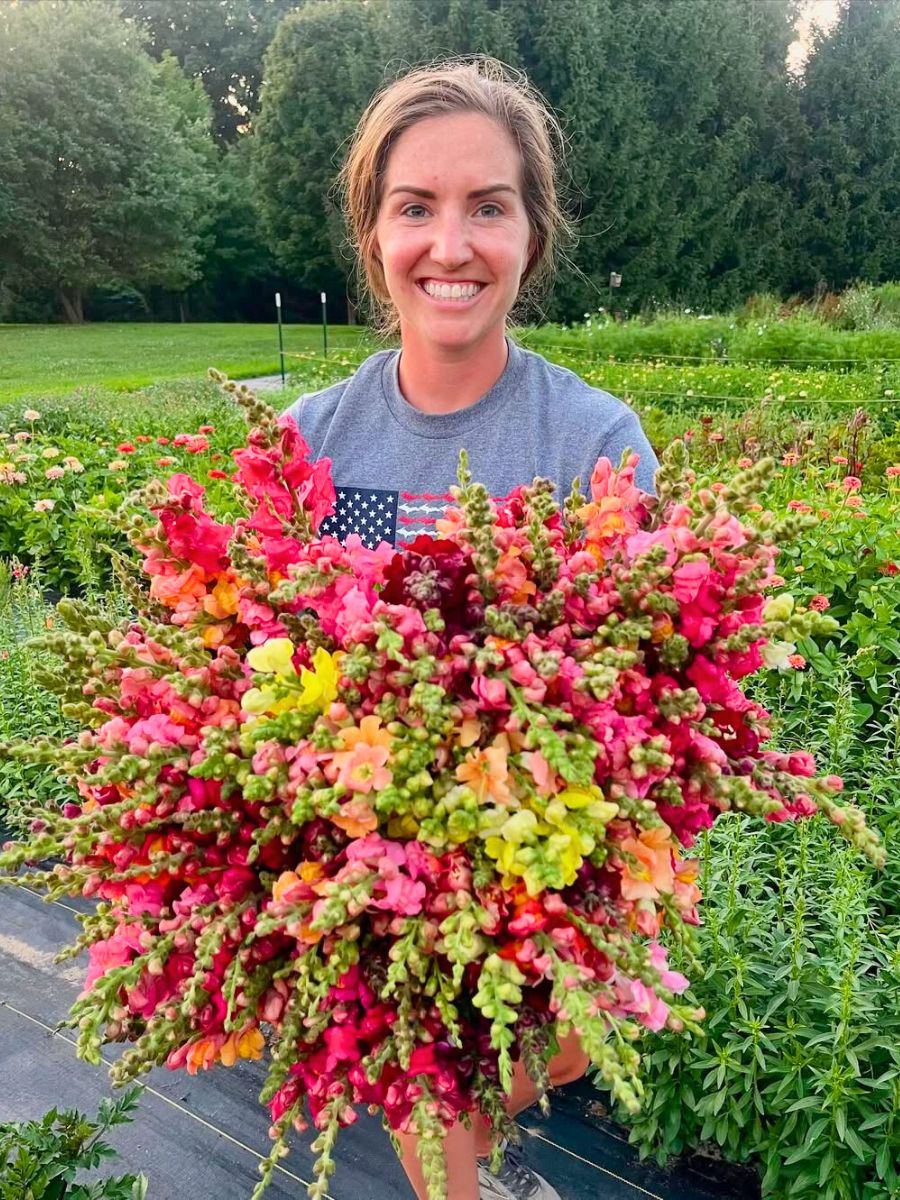
Colors and Variations of Snapdragons
As mentioned before, Antirrhinum comes in a variety of colors. A great example of a beautiful Antirrhinum is the Antirrhinum Potomac™ Early White. This strong-growing variety with ivory white petals and just a hint of lemon sorbet throat makes a wonderful addition to multicolored and monochromatic mixed bouquets.
Potomac is ideal for production during periods of high light, long days, and warm temperatures. Plants produce tall, strong stems and long spikes with good flower quality for excellent retail show and vase life. It can be grown year-round with supplemental high-intensity lighting.
Some of the Most Popular Snapdragon Types for Your Garden
There are numerous varieties of snapdragons available, each with its own characteristics. Here are five popular snapdragon varieties, although it's important to note that popularity can vary by region and personal preference:
- The Rocket series features tall, sturdy plants. They have large, closely packed flower spikes in various colors, such as red, pink, yellow, white, and purple. Rocket snapdragons are great for adding height and structure to the back of flower beds and borders.
- The Sonnet series is a popular mid-sized snapdragon variety. They produce dense flower spikes in a range of colors, including pink, red, yellow, white, and purple. The compact size of Sonnet snapdragons makes them well-suited for containers, borders, and mass plantings.
- The Liberty series is another mid-sized variety. They are known for their long-lasting flowers in several colors and their ability to perform well under a variety of weather conditions. They work well in flower beds, borders, and containers.
- The Twinny series is characterized by its double or 'butterfly' petals, which give the appearance of two flowers fused. They are available in shades of peach, pink, rose, yellow, and white.
- The Potomac snapdragon is known for its strong, straight stems and dense flower spikes, making it an excellent choice for cut flower production. This type of snapdragon comes in a range of colors like white, lavender, orange, and many more...
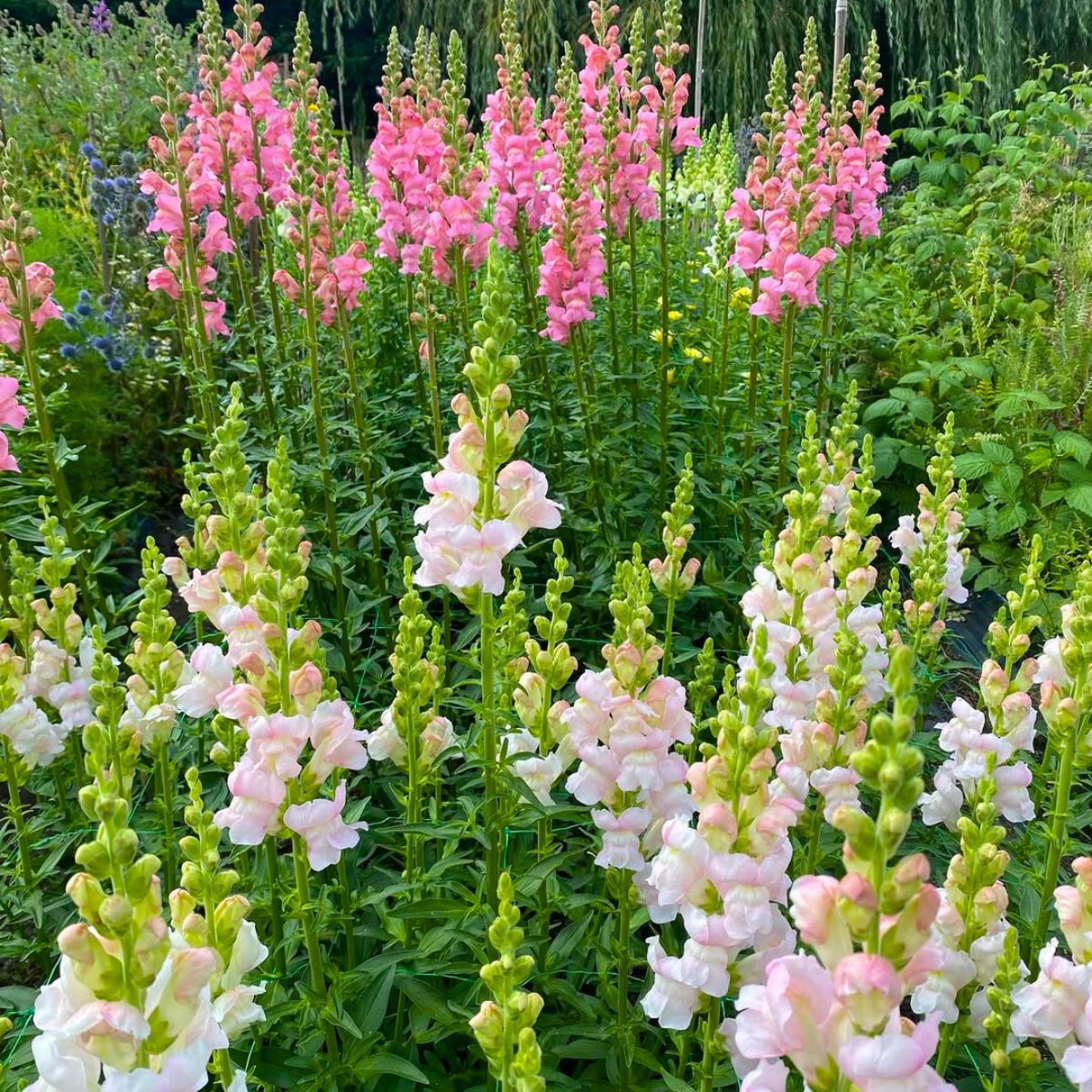
When choosing snapdragon varieties for your garden, consider factors such as the available space, desired plant height, color preferences, and growing conditions. Many snapdragon types are available, so you can find the perfect plants to suit your specific needs and preferences. To have them in a bouquet or as part of your garden, they're one of the favorites worldwide.


